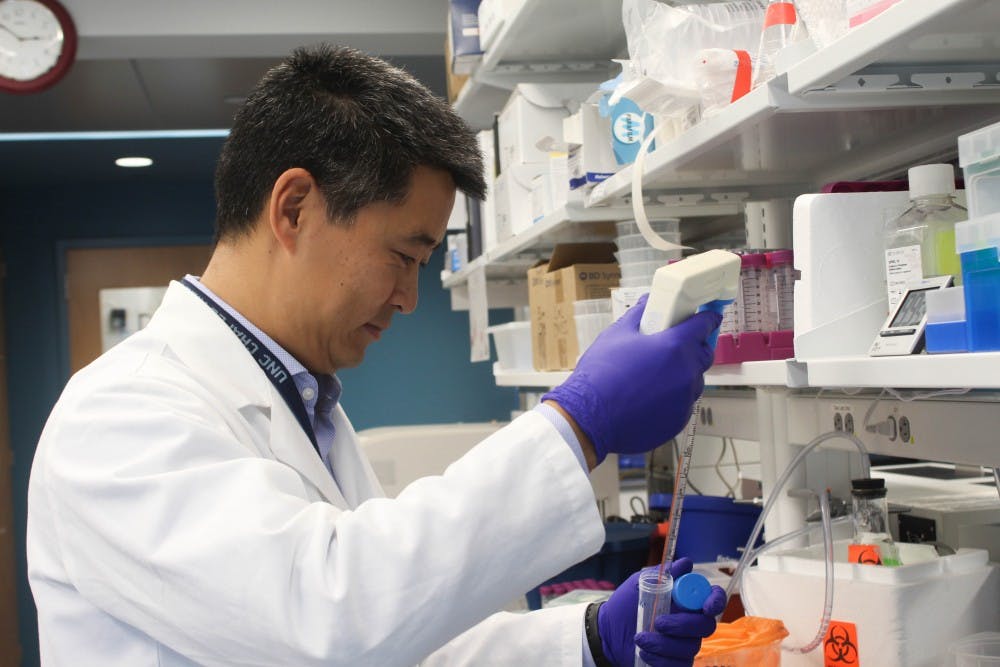Dr. Edwin Kim, medical director of the UNC Allergy and Immunology Clinic, began studying food allergies while in medical school. Now he works with Executive Dean at the UNC School of Medicine Dr. Wesley Burks — and other researchers in the UNC Food Allergy Initiative — to develop treatments and cures for food allergies.
The UNC Food Allergy Initiative has been involved in different kinds of treatment studies, including oral immunotherapy, OIT, which uses the consumption of food in a flour form as a way of growing resistance against allergies.
Kim said OIT is frequently used with peanut flour, and that the treatment has been in the news recently because the Food and Drug Administration is considering it as an actual treatment for patients.
“We do also have a big branch of our group that works in the lab that is also trying to understand the immune changes that come with these treatments,” Kim said. “Hopefully that way, we’ll be able to understand a little bit more about why food allergies are happening in the first place.”
Kim’s group has also been involved in a kind of treatment called sublingual immunotherapy, SLIT, which they published an article about last month. SLIT uses liquid peanut solution held under the tongue, as opposed to OIT, in which the flour must be ingested. Both treatments seem to increase how much peanut it takes for people to have an allergic reaction.
Although both treatments seem to be effective, Kim said they have their differences.
Kim said that SLIT is probably not quite as strong as OIT, but that OIT contains restrictions around what activities one can do around the time of dosing. OIT also appears to be more difficult to administer in comparison to SLIT, which only involves holding a few squirts of liquid under the tongue for a couple of minutes.
Although Kim has been heavily involved in the UNC Food Allergy Initiative, he said he can’t take all of the credit for the group and its accomplishments. He wants people to know about all of the work that Burks has put into this research.
“This research really began with Dean Burke while he was at Duke, and then he brought this over here,” Kim said. “He’s been a world-renowned food allergist, so I just think it’s important that credit is given where it’s due. This is a lot of the stuff that he started, and I’ve been lucky enough to have the opportunity to continue to move forward as well.”



